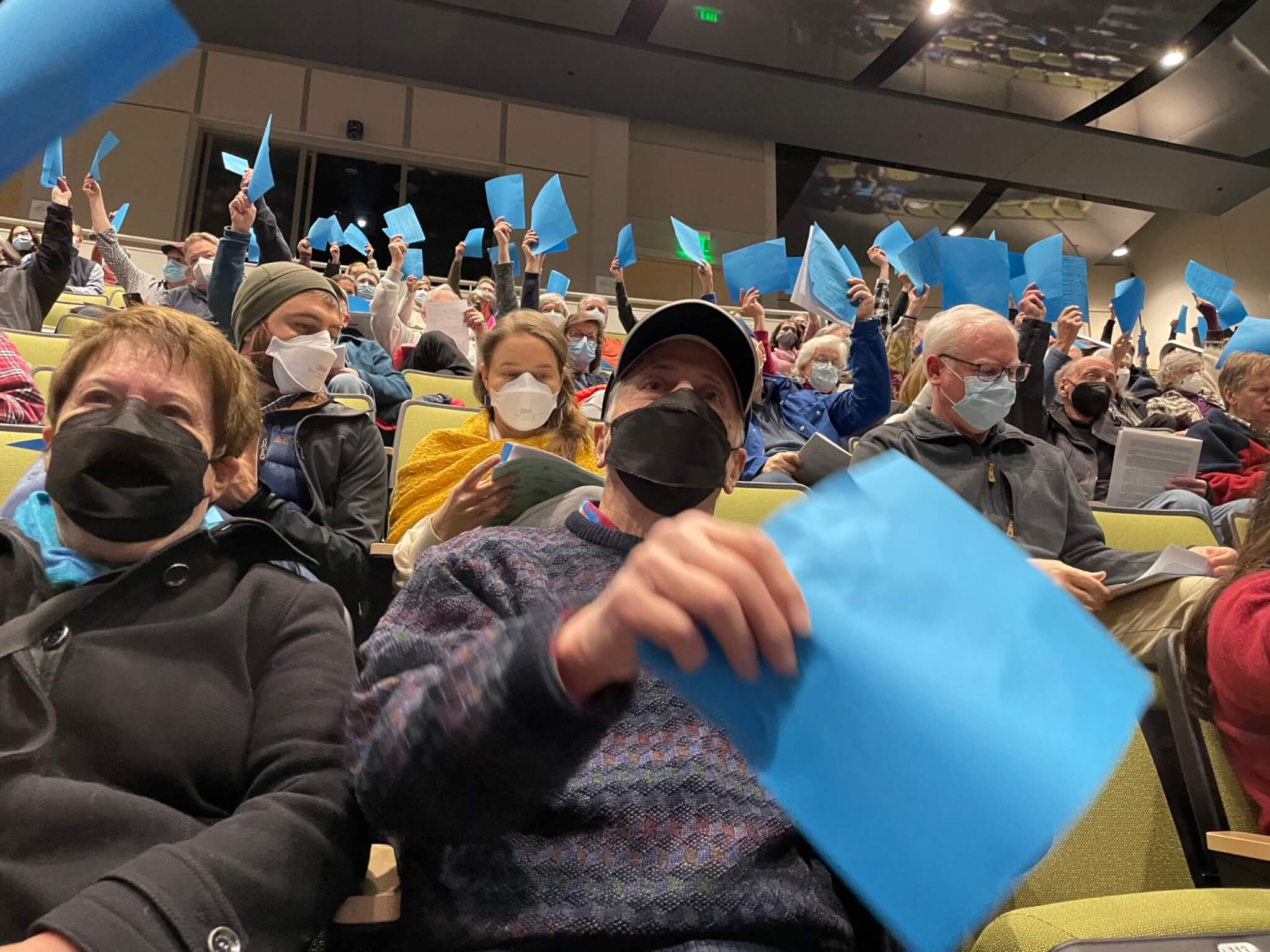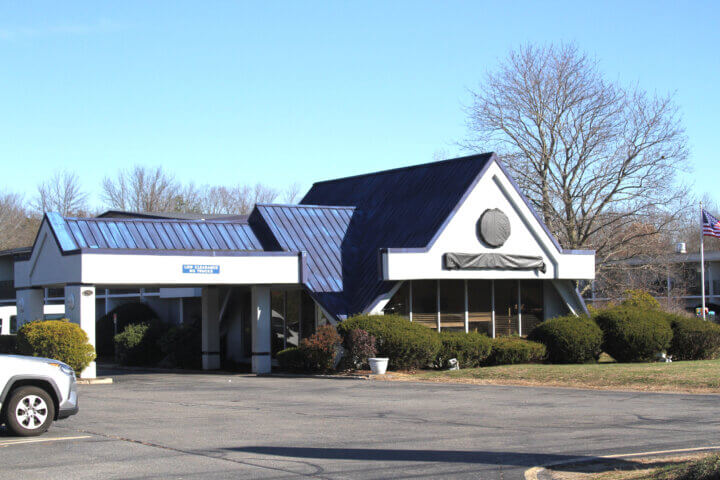The superintendent didn’t want to be there. Nor did the co-chair of the Building Committee. But they both urged the crowd of about 1,000 residents at the special Town Meeting to open their wallets for approximately $7.2 million to close the budget gap to build a new Middle School.
“We are not happy to be here,” said Dawn Guarriello, an architect and Building Committee co-chair along with Pat Nelson. “It’s not ideal to be back in front of you.”
But voters approved the article by at least the two-thirds necessary to pass a debt exclusion measure. The article now goes before voters again on Feb. 16 at the ballot box. Both affirmative votes are necessary to override the limits of Prop 2 ½.
Escalating construction costs and inflation swelled the budget from $102.8M approved a year ago to almost $110M which required the town to approve more money before the project is sent out to bid.
But it hasn’t been an easy sell since taxes will go up, first to pay for the $102.8 already committed and recently to cover the increase in the budget.
“We thought we were good to go,” said Superintendent Laurie Hunter, but the estimate in July was about 5.5 percent over what Town Meeting approved, she said.
“The design didn’t change, the economy changed,” said Hunter. “It’s been a really hard time.”
Although the Building Committee said about $6M had been trimmed, it wasn’t enough.
Objections centered around the lack of an alternate plan that could be built with $102.8 million, and the inclusion of a large gymnasium and 420-seat auditorium. Those so-called community spaces were not cut back, citing their popularity.
Parashar Patel from the Finance Committee said the added tax would be approximately $73 annually for the new $7.2 million for the median value home, and about $1,200 annually for the school project.
Patel said borrowing may be done in two phases to “stagger the amount of borrowing;” draw out the length of the bond repayment to 25-30 years; and use a Middle School Stabilization Fund.
Select Board Chairman Matt Johnson noted that the vote to back the article was not unanimous, nor was it for the FinCom.
“The scope and the tax impact concerned us,” said Johnson.
Anita Tekle, former long-time town clerk, urged a no vote, claiming $103M was “enough.” She said she supported the vote a year ago for $102.8M,
“It’s time to look seriously at what we can build for $103 million,” she said. In her flier, distributed with other materials outside the high school gym, she and activist Dorrie Kehoe noted that the combined cost ($102.8M and $7.2M) is $110M,
“That is more than Concord paid for three elementary schools and the new high school combined ($999,048,334 for all 4 buildings after deducting state aid and Carlisle’s share of CCHS.),” she wrote.
Other residents said the Community Preservation Fund might be used for recreational areas included in the plan, and decried the tax hike for this and the other vital capital spending.
One person said, “This is not a normal proposal. There is no plan B. Why didn’t we do that?”
Tekle and Kehoe urged Town Meeting to “take a fresh look with possibly new members.”
Ruth Bennett, an architect, called for a design review panel which, she said, exists in other communities. She voted for the $102.8 last year.
“Now we don’t want to live within that budget,” Bennett said.
As the crowd streamed out of the gym and auditorium, Stephan Bader reminded residents to vote on Feb. 16.
Our live coverage of the meeting, which brought out 1.030 voters on a slippery winter night, can be found here.






